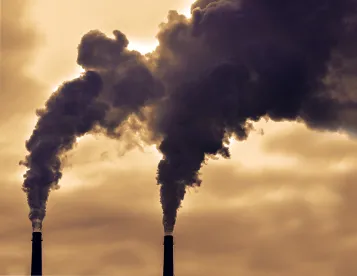Amid the headline-grabbing events of 6 January 2021, the U.S. Department of Treasury released final regulations under Code1 Section 45Q. Code Section 45Q provides for a U.S. federal income tax credit at varying rates to taxpayers that participate in various aspects of the process of sequestering carbon oxide and disposing of it in secure geologic storage, use it as a tertiary injectant in a qualified enhanced oil or natural gas recovery project, or utilize it in certain processes.
The final regulations are broadly similar to the proposed regulations published in May of 2020, with revisions focused primarily on making the credit broadly available and as flexible and useful as reasonably possible for businesses of all sizes. By tying the final regulations to industry standards and well-known and understood regulatory requirements used elsewhere in the Code and Regulations, the IRS appears to be signaling an intent to make compliance with the requirements of Code Section 45Q as straightforward and practicable as possible. In addition, certain provisions indicate that Treasury intends to allow parties to allocate contractual and physical risk in ways that could make investment in carbon oxide sequestration projects more appealing to even the more risk-averse tax equity investors.
Simplification was clearly high on the list of Treasury’s goals. Among other things, Treasury redefined “carbon capture equipment” to focus on functionality rather than on an enumeration of qualified (or excluded) components and placement in service by reference to existing regulations promulgated under Code Section 168. In addition, the regulations expressly permit the use of subcontractors for disposal, injection, and utilization, and tailored the measurement of relative fair market value under the 80/20 test to only carbon capture process train equipment, rather than other equipment in the larger project into which such equipment is integrated. The final regulations also clarify that carbon capture equipment may be owned by a taxpayer other than the taxpayer that owns the industrial facility at which such equipment is placed in service. This could be read to imply that taxpayers should not be concerned about the limited use property rules, but Treasury stopped short of stating that plainly.
The Internal Revenue Service’s ability to evaluate taxpayer compliance was also apparently a Treasury priority. For example, when an election under Code Section 45Q(f)(3)(B) is made, only the person in direct contractual privity with the person authorized to make the election will be permitted to claim the credit. In addition, while Treasury agreed to permit a taxpayer to claim a credit even if the taxpayer’s contractual counterparty fails to submit a Form 8933 when required, Treasury will not permit the taxpayer to claim the credit when the taxpayer itself fails to file a Form 8933.
The final regulations generally incorporated guidance released in early 2020, specifically, the single-project approach to aggregation of carbon capture equipment and express authorization for taxpayers to “pool” their access to the credit by investing in a carbon capture venture through a partnership, subject to compliance with procedures set forth in Revenue Procedure 2020-12. In the preamble to the final regulations, Treasury stated that it would interpret the 80/20 and single-project rules consistently with existing guidance regarding other provisions of the Code, e.g., the renewable energy tax credits authorized by Code Sections 45 and 48.
Certain other provisions clarified what types of carbon capture equipment qualify, including equipment incorporated into a co-generation facility and specific naturally occurring deposits. These provisions are generally consistent with the implication in Code Section 45Q that the carbon oxide that is ultimately sequestered be produced as part of a process that creates a commercial product or using direct air capture.
One potential area of consternation in the final regulations is the decision not to adopt an interim allowance of the Code Section 45Q credit. The credit is available for twelve years after a qualified facility is placed in service. However, before a taxpayer may claim credits, the facility’s Environmental Protection Agency Monitoring, Reporting, and Verification Plan and analysis of lifecycle greenhouse gas emissions must be approved. Thus, a significant delay in receiving either of these approvals could cause the taxpayer to lose some of the twelve-year period during which the credits may be claimed. In the preamble to the final regulations, Treasury indicated that it is not receptive to any deviation from the placement in service standard or interim credit allowance concept. However, if this proves to be a significant complication, perhaps Treasury would reconsider.




 />i
/>i
